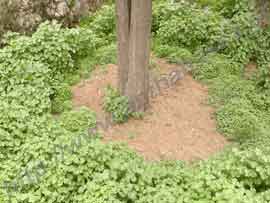This week in lab there has been no growth on my grass species plates, indicating the sterilization procedure is working for the grass. Growth of the gray mold is significantly quicker than the week I've given it, with noticeable mycelium by day 3 or 4. Next week I plan on using the same concentrations of alcohol and bleach but letting the silver leaved nightshade leaves sit longer than 5 minutes so the bleach penetrates the trichomes.
While waiting to see results from my grass plates I have been working more with my unknown bacteria. To even begin to classify a bacterium species one must know the cell shape, whether it is Gram positive or negative, and the organism's oxygen requirements. The first two pieces of information can be deciphered using Gram staining but the last is a requires other tests.
To test if a bacterium is capable of growing in oxygen free environments, two test chambers are prepared. The first is in a giant pickle jar with a burning candle that will use up the oxygen in the container. Only a very small amount of oxygen can get in through the edges of the lid making an environment most suitable to microaerophiles: bacteria that like a very specific, low level of oxygen.
The other test is a box with a pouch of chemicals that use up the all the oxygen in the box, while producing carbon dioxide. This creates an environment that only strict anaerobes or facultative anaerobes can live in. Strict anaerobes are bacteria that can only live in oxygen free environments, which I know I don't have because my bacteria was growing fine on my plates in open air. Facultative anaerobes are bacteria that can switch from oxygen rich environments to oxygen poor environments.
And as a bonus a photo of my bacterium Gram stain under the microscope:






